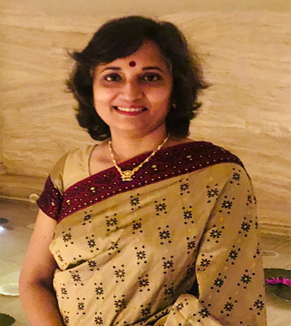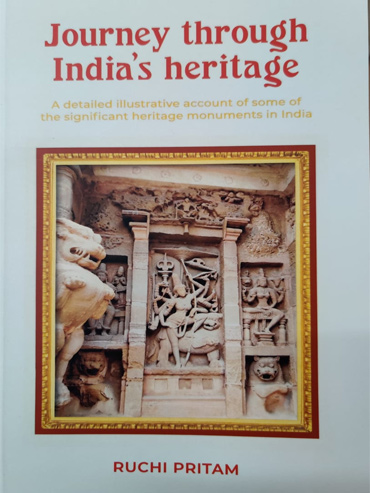This book offers a detailed illustrative account of the most significant monuments of Bihar, Tamilnadu and Odisha States of India. It showcases the rich heritage of India spanning from prehistoric era to the medieval era. Indian temples and monuments were centres of learning through visual and abstract clues to culture, philosophy, science and technology. The Author has attempted to capture the wonders in stone through words and magnificent photos.
The book starts with the description of the rich legacy of powerful kingdoms in Rajgir that laid the foundation for peace that assisted in the growth of new Indic faiths-Buddhism and Jainism. There are remains in Rajgir associated with incidents mentioned in the Mahabharata that make this place very intriguing. The powerful Magadh kingdom laid the foundation for the growth of new faiths resulting in the construction of massive monasteries. The ruins of one of the greatest ancient international university in Nalanda thus becomes an important part of this book. The exchange of thoughts with foreign emissaries and monks ensured that knowledge from Bihar spread far and wide covering almost all of South East and East Asian civilisations.
The Author then takes the reader through the magnificent stone art of the mighty Pallava dynasty in Mahabalipuram and Kanchipuram where the Pallavas had mastered the art of temple construction, ranging from carved monoliths to full scale magnificent temples. Even today these monuments leave the viewer mesmerised and amazed as to how they were constructed. Mahabalipuram was an ancient port and this assisted in the spread of ideas and culture beyond seas. Chinese travellers such as Hiuen Tsang travelled from Buddhist sites in North India to Kanchipuram and this has been captured on the walls of the Vaikunta Perumal Temple in Kanchipuram which shows the Pallava history through bas reliefs on the walls. The Ancient Indic concepts of God King and Chakravartin travelled from India to South East Asia and the influence is visible till date.
From Dravidian architecture the reader is transported to the mesmerising Kalinga style temples of Odisha. Twelve major temples in Bhubaneshwar followed by chapters on Jagannath Puri and Sun Temple at Konark showcase the unparalleled mastery of sculptors, architects and engineers of India. The author has covered not only Kalinga style temples but the Jain caves of Udayagiri and Khandgiri with special mention of Kharavel, the mighty ruler, who vanquished the Mauryan empire to regain its respect.
The author’s approach has been to visit the concerned locations to get the feel of the place. The details have been collected onsite and from other authentic sources. The unique aspect of this book is that it covers the legends, history, art and architecture of these places which are interspersed with striking photographs of the important features of the monuments. The whole effect is of walking through the history and architecture of these sites.

Author- When did the Mahabharata War Happen?
Prof Nilesh N Oak, Adjunct Faculty, Institute of Advanced Sciences, Dartmouth, MA holds BS & MS in Chemical Engineering as well as an Executive MBA.
Best Selling author of "Rama Ravana Yudh - 12209 BCE"
Ruchi Pritam always felt fascination for Indian art which manifested in her love for Indian temples. Galileo demonstrated to the western world the fundamental reality of celestial = terrestrial by pointing his telescope to the sky. My research into ancient Indian narratives began with celestial descriptions of the epics, which led to the dating of the events of these epics and ultimately these dates found their impressive corroboration through terrestrial disciplines of geology, hydrology, oceanography, and genetics. Ruchi’s passion, the Indian temples, aim to accomplish the manifestation of inner and cosmic realities through terrestrial structures accessible to the consciousness of the masses.
Indian temples were centers of learning through both visual and abstract clues to the culture, philosophy, science, and technology. These learnings or the scale of the construction and the magnificence of these wonders in stone cannot be adequately captured by words, yet Ruchi has attempted this very task with the help of words and magnificent photos.
She walks us through the architecture and known history of 11 specific heritage and temple complexes through three states of India: Bihar, Odisha, and Tamil Nadu.
Indian temple architecture represents many facets of Indian civilization. My observation is that most visitors to Indian temples, including visitors of Indian origin, appear clueless when they visit these sites. Many find it challenging, me included, to connect and relate to what they are viewing at these sites. This is not surprising as most of us are not conversant with the history and context surrounding these temples. Ruchi’s detailed yet crisp summaries for each of these sites would provide the context for visitors. The book acts as a travel guide to the readers, would encourage them to visit these places and interact with them meaningfully. The book with its magnificent photographs would also serve as a great souvenir.
I would not dare guess what and if there was a specific motivation behind Ruchi’s selection of these 11 locations, however, what I can vouch for is that the choice appears satisfying. I felt satiated at the end of this virtual literary and photographic temple tour. As it happens, I have been to only three of these 11 sites and I have made the mental note to add the rest on my travel itinerary.
I would request Ruchi to continue her passion by bringing out such useful information for additional temple sites of India. This would be natural evolution for what she has initiated with this book. I began my journey with astronomy evidence and dating of Ramayana and it has naturally evolved into the dating of world civilizations and their connections with ancient India. In similar fashion, I hope, this journey of Ruchi continues within and beyond the borders of India.
Ruchi is a History and Law Graduate from Delhi University with an MBA from Madras University. She is a Bank-empaneled lawyer and has taught at several MBA institutions as a visiting faculty. She has always had a fascination for Indian art, temples and culture that has led her to travel and write on the various architectural wonders of India. She believes that making one connect with the ancient roots through an understanding of heritage brings one closer to others. After all, humans are one big family.


In Stock
INR 595.00 / Per copy
This book offers a detailed illustrative account of the most significant monuments of Bihar, Tamilnadu and Odisha States of India. It showcases the rich heritage of India spanning from prehistoric era to the medieval era. Indian temples and monuments were centres of learning through visual and abstract clues to culture, philosophy, science and technology. The Author has attempted to capture the wonders in stone through words and magnificent photos.